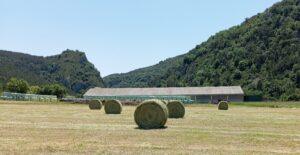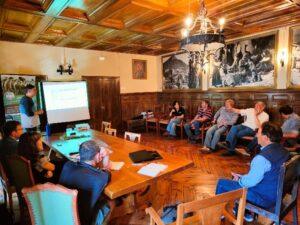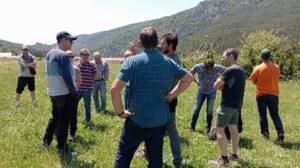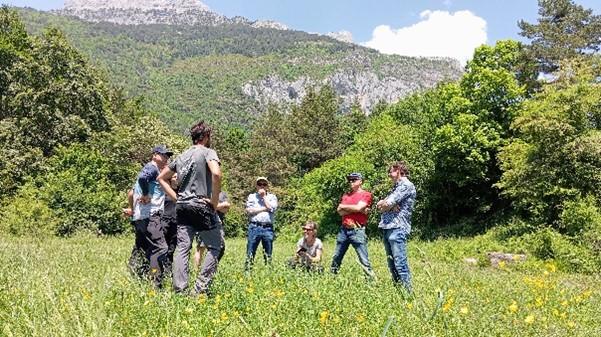Open Day in HECHO (Huesca). May 30, 2025
Sowing and harvesting forages is a common and traditional farming practice that allows the storage of spring and autumn forages to feed animals at other times of the year or in different locations. Over the years, techniques and machinery have been developed to solve the main difficulty of natural drying of cut forage and to reduce labor and time required for bale making. Hay bales, silage balls, and wrapped bales dot the summer landscapes of fields and farmyards, creating a scenery where livestock and agriculture come together to forge an economic and social fabric in rural areas.

Round grass bales in the field
The harvesting season ends between rainy and sunny days that allow us to work, and we take stock of the kilograms collected and the months we will be able to extend the feed for our animals. But… what about the quality of these forages? How will it affect intake or milk production in my sheep? How does quality affect the price per kilogram or the protein level of the hay obtained?
These and other questions were the topic of discussion and debate among participants in the Open Day held on May 30 in the town of Hecho, titled “The Importance of Harvesting Quality Forages for More Profitable and Sustainable Livestock Farming.”

Presentation by Roberto Ruiz (Neiker) at the Hecho Town Hall Plenary Room
KEY ASPECTS IN FORAGE QUALITY
Among the most interesting concepts when talking about forage quality for animal feeding are palatability and digestibility, which indicate how many kilograms of forage a sheep is able to consume (palatability) and how much of it will be utilized (digestibility). Both qualities determine the RELATIVE VALUE of a FORAGE (RVF), a concept that is becoming increasingly significant both nutritionally and commercially to classify and monetize forages.
The quality we refer to depends on the climate, the mixture of species in the pasture, and the timing of mowing — a crucial decision where one must consider the optimal state of each crop, not just the yield, since harvesting lignified stems can dilute forage quality and reduce their relative value.
SOME IDEAS FOR IMPROVEMENT
- Plan sowing; if possible, stagger it so that the harvest can be done progressively each day.
- Cut grasses and polyphytic mixtures at the beginning of stem elongation, legumes at 50% flowering or earlier, and vetches or peas when basal pods are formed and apical flowers are visible. Delaying the cutting time reduces the quality of both hay and silage.
- Do not cut too close to the ground; lower parts may carry soil, increasing the risk of listeria, and are also more fibrous with less protein and lower RVF. If the crop has matured too much, raise the cutting height as much as possible—again, quality will compensate for quantity, and the dry matter left on the ground will serve as fertilizer.
- Finally, analyze the forages and classify them according to their quality. This will allow you to feed animals according to their physiological needs.
This event was held within the framework of the LIFE Green Sheep project and organized by Oviaragón to transfer the knowledge acquired and raise awareness in the production sector towards an efficient and environmentally friendly model. The LIFE Green Sheep project offers farmers concrete solutions to significantly reduce their carbon footprint. Visit the project website at https://life-green-sheep.eu/ and consult an Oviaragón advisory veterinarian for guidance.

Participants in the event, visiting the meadows

